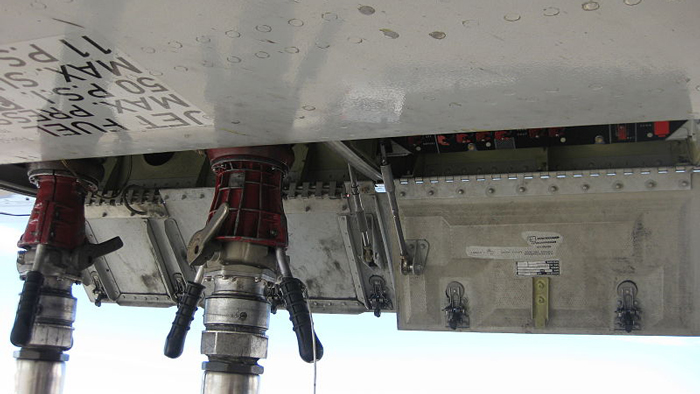Fuel contamination is an insidious challenge that can wreak havoc on diesel engines, leading to a myriad of issues that affect performance and longevity. Among the various substances that can compromise diesel fuel, transmission fluid stands out as a particularly concerning contaminant. This article will delve into the implications of transmission fluid contamination in diesel fuel, examining not only the causes and effects but also the best practices for management and prevention.
Understanding fuel contamination begins with recognizing the core components of diesel fuel. Diesel fuel is comprised of hydrocarbons, and these are critical for the combustion process within an engine. When transmission fluid, a viscous liquid designed to facilitate the functioning of a vehicle’s transmission system, mingles with diesel fuel, it introduces a host of complications. The fundamental nature of transmission fluid—rich in additives for viscosity and heat reduction—can alter the combustion characteristics of diesel fuel.
Causes of Contamination
The most common routes for contamination by transmission fluid include equipment malfunction, improper maintenance practices, and inadvertent mixing during refueling. For instance, when hydraulic lines or seals fail, there is a potential for cross-contamination. This can happen if a diesel-powered vehicle is also equipped with hydraulic systems (common in construction or agricultural equipment). Over time, leaks can cause transmission fluid to seep into the diesel fuel tank.
Additionally, fuel handling practices contribute significantly to contamination risk. A lack of vigilance during refueling can lead to spills or accidental mixing. This is particularly true in shared fueling stations, where multiple types of fuel and lubricants may be present. Even errors like using the wrong nozzle can result in the contamination of diesel fuel with transmission fluid.
Effects of Contamination
When transmission fluid contaminates diesel fuel, the ramifications can be extensive. The most immediate effect is the alteration of fuel properties, leading to poor combustion. Diesel engines rely on a specific fuel-to-air ratio; when this balance is disrupted, it can result in incomplete combustion, characterized by black smoke and decreased horsepower.
Moreover, the introduction of transmission fluid can create a fouling effect within the fuel system. Fuel injectors can become caked with residue, reducing their efficiency and impairing the engine’s overall performance. This can result in increased maintenance costs. The need for frequent cleaning or replacement of injectors might arise, coupled with an overall decline in fuel efficiency.
The lubricating properties of transmission fluid can also lead to degradation of the fuel injectors and fuel pump components. Components like seals and gaskets are designed to handle specific chemical compositions. The addition of foreign substances like transmission fluid can accelerate wear and tear, leading to premature failure of essential parts. The ensuing repairs can be both costly and time-consuming, resulting not only in financial consequences but also operational downtime.
Diagnosis and Detection
Identifying fuel contamination necessitates vigilance and routine analysis. One of the primary indicators of contamination is unusual engine behavior, such as rough idling, decreased power, and increased exhaust emissions. Mechanic professionals often rely on fuel testing techniques that analyze the chemical composition of diesel fuel. Testing labs can determine the presence of transmission fluid and other contaminants through methods like gas chromatography.
Additionally, visual inspections can aid in identifying contamination. If fuel appears murky or has an unusual sheen, it could indicate the presence of foreign substances. Regular monitoring of fuel quality, particularly in older engines or those operating under strenuous conditions, is crucial for maintaining optimal performance.
Management and Prevention
The best defense against fuel contamination lies in proactive management and best practices. Adhering to a strict maintenance schedule is imperative. Regularly inspecting hydraulic lines and seals can preempt leaks that lead to contamination. The use of high-quality diesel fuel from reputable suppliers also minimizes the risk, as these fuels are less likely to have been contaminated before reaching the end user.
Moreover, implementing a thorough training program for operators can instill best practices in handling and refueling equipment. Awareness of the risks associated with cross-contamination is essential. Operators should be trained to verify that the correct fueling procedures are followed diligently, ensuring that diesel and transmission fluids are kept separate at all times.
Furthermore, adopting advanced filtration systems enhances fuel purity. Modern filtration technology can remove micro-particles and contaminants, safeguarding the integrity of diesel fuel before it reaches the engine. Regular fuel testing also plays a critical role in identifying potential contamination early on, allowing for corrective actions to be taken well before serious damage occurs.
Conclusion
Fuel contamination by transmission fluid is a multifaceted concern that can significantly hamper engine performance and reliability. The implications are both immediate and long-term, affecting not only the mechanical integrity of the engine but also the operational efficiency of vehicles and equipment. It, therefore, becomes essential to prioritize vigilance, maintenance, and education to mitigate the risks associated with this form of contamination. Understanding the nature of such challenges and the steps necessary to counteract them can lead to more efficient operations and prolonged equipment life. By taking a proactive approach to fuel management, businesses can avoid the pitfalls of contamination, ensuring a smoother and more reliable operation.
